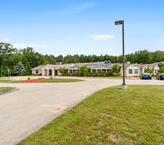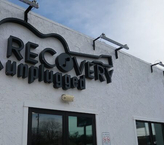How Long Does Treatment Take?
- Questions About Rehab
- How Do I Choose The Right Rehab?
- How Do I Help A Recovering Alcoholic?
- Do I Need Rehab, Can I Do It On My Own?
- How Long Does Detox Take?
- What If I Wait To Go To Treatment?
- Caring For Loved Ones While You’re In Rehab
- Cost Of Drug And Alcohol Rehab
- Can I Get My Job Back After Rehab?
- How Do I Pay For Addiction Treatment?
- How Do I Prepare For Rehab?
- How Do I Regain My Loved Ones’ Trust After Rehab?
- What If I Want To Leave Treatment?
- What Should I Have In My Aftercare Plan?
- Who Will I Be In Addiction Treatment With?
- How Do I Stay Sober After Rehab?
- How To Know If You Need Help
- Paying For Rehab With Medicaid And Medicare
- Paying For Rehab With The Affordable Care Act
- Should I Go Back To Rehab?
- Should I Travel For Rehab?
- What Is A Typical Day In Drug Rehab Like?
- What Does Admission To Rehab Look Like?
- What Happens If I Relapse?
- How Do I Handle Triggers?
- What Makes A Top-Rated Treatment Center?
- What To Bring To Rehab
- Why Does Rehab Have A Stigma?
- Will My Social Life Change After Rehab?
Understanding The Length Of Treatment
For those living with a substance use disorder, seeking treatment can be an intimidating experience. Many wonder what their friends and family will think, how much it will cost them, or what the length of their treatment stay will be. Because every person has their own unique story that will require their own unique approach, there is no one-size-fits-all formula for treatment.
With that said, it’s also important to recognize that like the length of treatment, the method by which someone recovers from an addiction will be different from person to person. However, there are several basic treatment options to choose from based on a person’s specific needs. The general length of most treatment programs are:
- 30-day program
- 60-day program
- 90-day program
- Long-term living programs, such as sober living facilities or halfway houses
When choosing a program, it’s helpful to first focus on what will bring about the highest chance of long-term success. Most individuals seeking recovery find that at least three months in treatment to get sober and initiate a plan for continued recovery works best for them. Research shows that the best outcomes occur with longer durations of treatment. Lengthier treatment programs can seem intimidating at first, but they may end up becoming the best opportunity for long-term results.
Online Addiction Counseling
Get professional help from an online addiction and mental health counselor from BetterHelp.
- Access to Therapy 24/7
- Easy Online Scheduling
- 20,000+ Licensed Therapists
Paid Advertising. We may receive advertising fees if you follow links to the BetterHelp site.
The Process Of Getting Treatment
The various treatment programs available across the country reflect the diverse nature of substance use disorders. When setting out on your treatment journey, it’s important to begin the process with realistic expectations. Addiction alters the chemistry of the brain, causing drastic changes the longer someone uses a substance. Therefore, the process of getting treatment and reaching long-lasting sobriety may take an extended period to reverse these changes.
Recovery is a lifelong journey. Recognizing that treatment is more of a marathon than a sprint will help place things in perspective. The more patient and accepting of the treatment process you are, the more effective it will be.
There are benefits to each program type, and it’s important to consider each one.
Common Questions About Rehab
The Benefits Of A 30-Day Program
A 30-day program is a great way to start treatment and is what most people usually set as an initial goal. Often, you may not know how long you’ll need to stay in treatment. This can be an excellent starting point for determining if a longer treatment program may be beneficial without feeling obligated. These types of programs offer time to get through any physical withdrawal symptoms you may experience and will allow you to start establishing relapse prevention techniques.
[I went to]Inpatient treatment for two weeks then I did outpatient treatment for 30 days coupled with local AA meetings. My advice to anyone who wants to succeed is to take one day at a time. Don’t think ahead. Listen. Listen. Listen.
This will also be a time to define a course of treatment and aftercare going forward. A 30-day program is easier to commit to because it’s the shortest period recommended for treatment. Usually, this also means it’s offered at a lower cost, so many insurance companies will typically cover this type of program.
Explore These Featured Centers


The Benefits Of A 60-Day Program
Another common timeframe for addiction treatment is a 60-day program. 60-day programs have the benefit of added time and support throughout treatment. In these programs, the extra 30 days will provide opportunities to dive deeper into the emotions and experiences that may be at the root cause of your substance use disorder.
This will also be a powerful time to build a sober support system, develop more sophisticated relapse prevention tools, become more stabilized in mood and behaviors, as well as ensure any medications started while in treatment have time to be adjusted to their most beneficial level.
A 60-day program will also provide more time to ensure all substances are removed from your system, and also begin to actively practice positive and healthy habits to help you maintain sobriety. Though insurance may or may not cover the full 60-day program, many treatment facilities offer payment plans that allow you to make smaller monthly payments over time.
The Benefits Of A 90-Day Program
A 90-day program may at first seem intimidating, but as mentioned before, the longer you’re in treatment and have support, the higher your chance will be at maintaining sobriety after you leave. These programs have been shown to have the highest success rates of the three.
90-day programs are one of the most impactful because it allows for more time to become adjusted to life without drugs or alcohol. During this time, you’ll be able to strengthen your sobriety skills and identify any potential triggers that can cause relapse. This is a program that individuals rarely take on their first attempt at treatment, however, many who experience a relapse after leaving treatment frequently share that they wish they did.
Looking for a place to start?
Join the thousands of people that have called a treatment provider for rehab information.
Free and confidential
Available 24/7
Access to professional treatment
Timelines In Treatment
Rarely does anything in life come in perfect packages, and treatment timelines are no different. Though the above program timelines are recommended, barriers such as finances, family needs, and employment often find their way to disrupt well-thought-out plans. It is common for individuals to attend treatment for 30-45 days at a residential treatment program and then return home to continue their treatment in a local community intensive outpatient treatment program for an additional 45 days. This process allows for a 90-day treatment program but extends flexibility toward the end to provide relief for some of these barriers. They also allow for support as you return to your home life in early recovery.
Discussing this idea at the start of treatment with your treatment team can lead to excellent aftercare planning and helps ensure a 90-day treatment strategy is more attainable.
Extended Care Options
Sometimes, additional care is needed after a 90-day program. In other cases, you may simply want to enter a more structured home environment while working toward long-term sobriety. In these instances, there are additional programs available in which you can immerse yourself in a sober living environment.
A sober living home is an affordable, drug and alcohol-free environment where you can find support from your peers who are also in recovery to work through your recovery plan. This is an additional step available for those that aren’t quite ready to go back out into the world yet and need that extra support and structure to learn to be successful in early recovery.
Check if my insurance covers rehab
Addiction Center is not affiliated with any insurance.
Getting Help For Addiction
Everyone is unique, and so are their life experiences. So it shouldn’t come as a surprise that the answer to “how long is treatment,” is that it differs from person to person. While in treatment, it is best to focus on the goal of recovery — not the time it takes to get out. If you need help finding a treatment program, contact a treatment provider.
Published:
Author
Travis Pantiel

-
Travis Pantiel is a Licensed Mental Health Counselor and a National Board-Certified Counselor with specialized expertise in the co-occurring disorder treatment field.
- More from Travis Pantiel
Sources


Recovery Starts Today
Call Now For Addiction Support